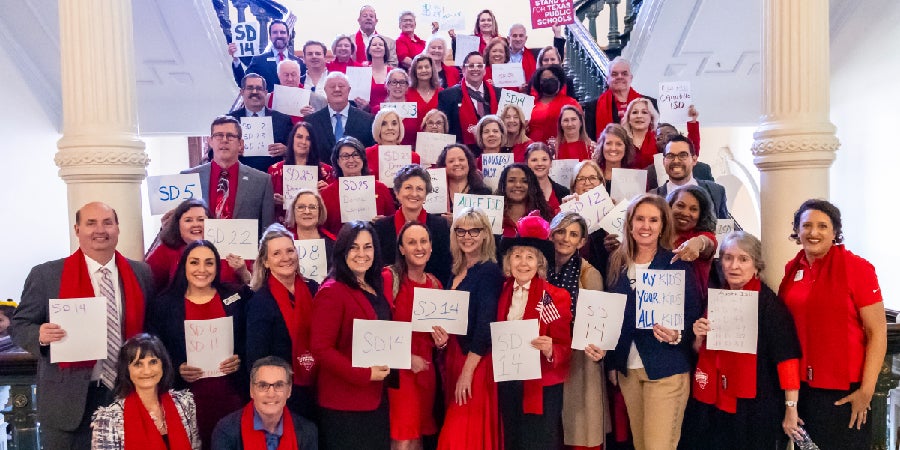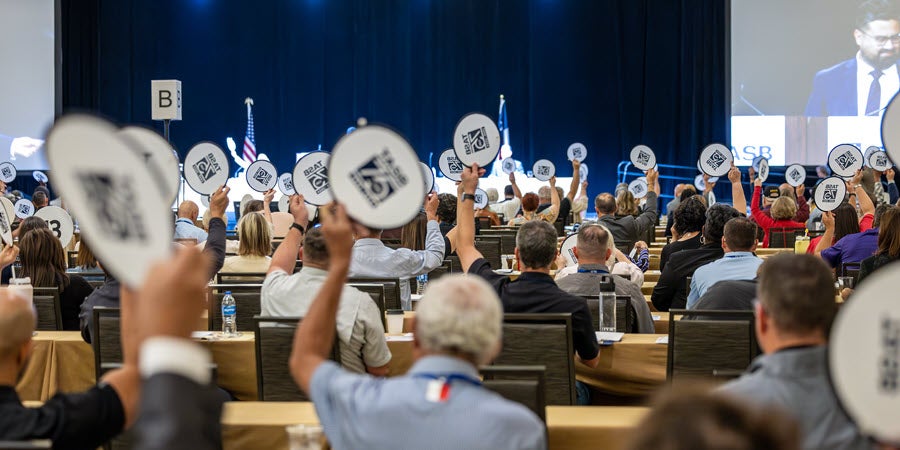The TASB Advocacy Agenda is created by members — and for members — to advocate for public schools at the state Capitol and beyond.
The Advocacy Agenda is a two-year action plan focusing the priorities of the more than 1,000 local school boards in Texas. The development of the agenda is a truly grassroots process, starting with Grassroots Meetings, held in every region of the state in even-numbered years. That’s where board members share the issues that matter most to their communities.
The Advocacy Agenda goes through several steps of review and approval before it’s finalized by TASB membership at the annual Delegate Assembly.
Once approved, the final TASB Advocacy Agenda is then used as the blueprint for work with the Legislature and state leaders. The grassroots process is representative of TASB’s governance structure and follows the organization’s bylaws.
What’s in the Advocacy Agenda?
The Advocacy Agenda is made up of Priorities and Resolutions.
Priorities
Priorities serve as TASB’s legislative agenda. Hundreds of trustees from across the state participate in their development from conception to adoption.
In even-numbered years, TASB visits the 20 education service center regions to hold Grassroots Meetings designed to gather input from local school leaders. Local trustees elected to TASB’s Legislative Advisory Council (LAC) then meet through the spring and summer to mold those regional issues into one list of statewide priorities that are eventually adopted by the Delegate Assembly.
The LAC also elects four of its members to serve on the TASB Board's Legislative Committee to ensure that the voice of the LAC is represented throughout the process. The Legislative Committee closely monitors the development of the Advocacy Agenda and TASB’s progress in accomplishing its goals.
After the Texas legislative session, the LAC reconvenes to determine if any changes need to be made to Priorities given legislative action.
Two-thirds of delegates at Delegate Assembly must approve any changes to the Priorities.
Resolutions
Between March and June of every year, school boards may submit proposals for Resolutions to the TASB Board for recommendation to the Delegate Assembly.
Resolutions subsequently adopted by the Delegate Assembly guide TASB’s responses on other issues that might arise before the Legislature and other governmental entities.
The TASB Board reviews all submitted resolutions and makes recommendations about their adoption to the Delegate Assembly. Adoption of or changes to resolutions requires a majority vote by delegates.

2024-26 TASB Advocacy Agenda
TASB’s Advocacy Agenda is created by Texas school board members. See the legislative issues most important to Texas trustees in the official 2024-26 Advocacy Agenda.

How To Submit an Advocacy Resolution
TASB’s Advocacy Resolutions process is a powerful way for your school board to shape the TASB Advocacy Agenda.

TASB Grassroots Meetings
Make your board’s voice heard by attending your regional Grassroots Meeting to shape TASB’s legislative priorities.

TASB Legislative Advisory Council
The Legislative Advisory Council is a 108-member body of school trustees elected by TASB members like you. Find out what they do and who they are.

Delegate Assembly
TASB is an association of many voices. Delegate Assembly is where those voices come together to develop a common vision — the best public schools we can provide for Texas students.
